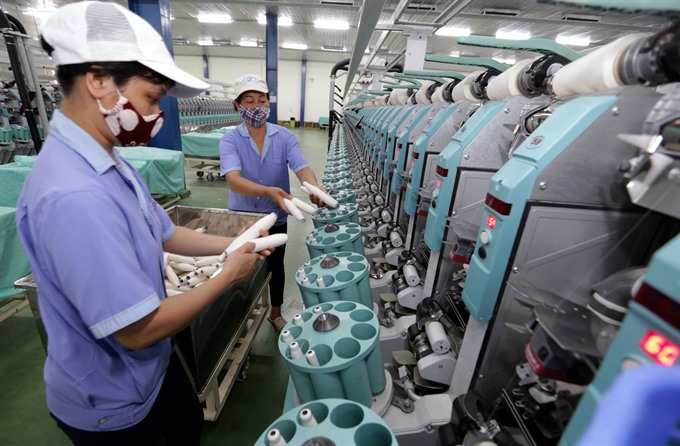 Economy
Economy

Việt Nam’s garment and textile revenue increased for the first half of this year but experts said the growth has not yet become sustainable.
 |
| A weaving and dying production line at Việt Nam National Textile and Garment Group’s factory in Nam Định province. — VNA/VNS Photo Trần Việt |
HÀ NỘI — Việt Nam’s garment and textile revenue increased for the first half of this year but experts said the growth has not yet become sustainable.
The national garment and textiles export value in the first half of the year grew 11.3 per cent year-on-year to US$14.58 billion, higher than the growth rate of 6.1 per cent year-on-year in the same period of 2016.
Lê Tiến Trường, deputy general director of the Việt Nam Garment and Textile Group (Vinatex), said the results by the garment sector were a praiseworthy effort in the context of the unstable global economy.
The demand for textile products from key importers like the United States (US), the European Union (EU) and Japan tapered off in the first six months of the year. However, exports to those markets experienced robust achievements, Trường said.
He said that the country earned $6 billion from the exports to the US, surging nearly 9 per cent; $2.3 billion to the EU, up 8 per cent; and $1.5 billion to Japan, up 12 per cent.
Việt Nam outstripped its competitors in garment exports during the period. According to the Trade Map, China experienced a decline of more than 5 per cent year-on-year, while Bangladesh saw a drop of 3.5 per cent, and Indonesia was down 5 per cent.
However, the trade protectionism policy of US President Donald Trump’s administration and interest rate adjustment from the US Federal Reserve will threaten sustainable export growth. There is a high possibility that Việt Nam’s competitors will further devalue domestic currencies to support exports as they did in 2016, Trường said.
As the biggest hurdle for Vietnamese garments is foreign competitors, especially China with large scale production and low costs, Vietnamese enterprises need to join the global supply chain with fastidious requirements of quality, prices and time of good delivery.
Local enterprises’ poor orientations have made them fail to meet the industry’s long-term development. In addition, unsound competition between domestic and foreign invested businesses has been on the cards.
Moreover, the auxiliary industry for the textile and garment sector has not yet developed. Low capacity in the stages of weaving and dyeing have led to the local demand for textile fabric being unsatisfied. The domestic garment industry must import 70 per cent of fabric, causing unbalanced development.
Meanwhile, Vietnamese garment enterprises are mostly small- and medium-sized ones with limited ability in accessing domestic and foreign markets. If they do not link with some large enterprises, these firms will find it difficult to survive and never have the ability to compete internationally.
Local garment enterprises have also faced many challenges, including the shortage of high-quality human resources, limitations in product development, capital access, marketing and foreign languages, and high input costs.
The garment sector recommended to the relevant authorities that they support training programmes in original design manufacturer (ODM) business and information and technology while creating favourable conditions for enterprises to have access to soft loans and preventing smuggled goods. — VNS




